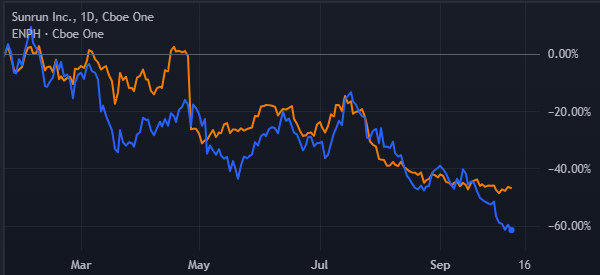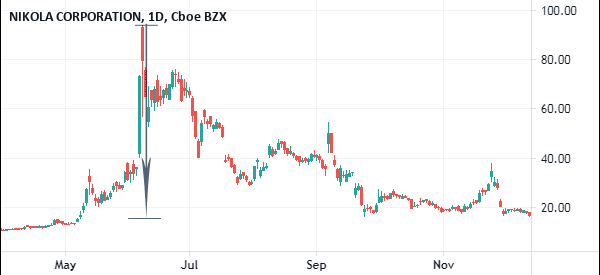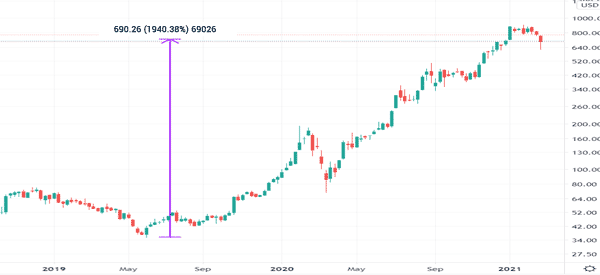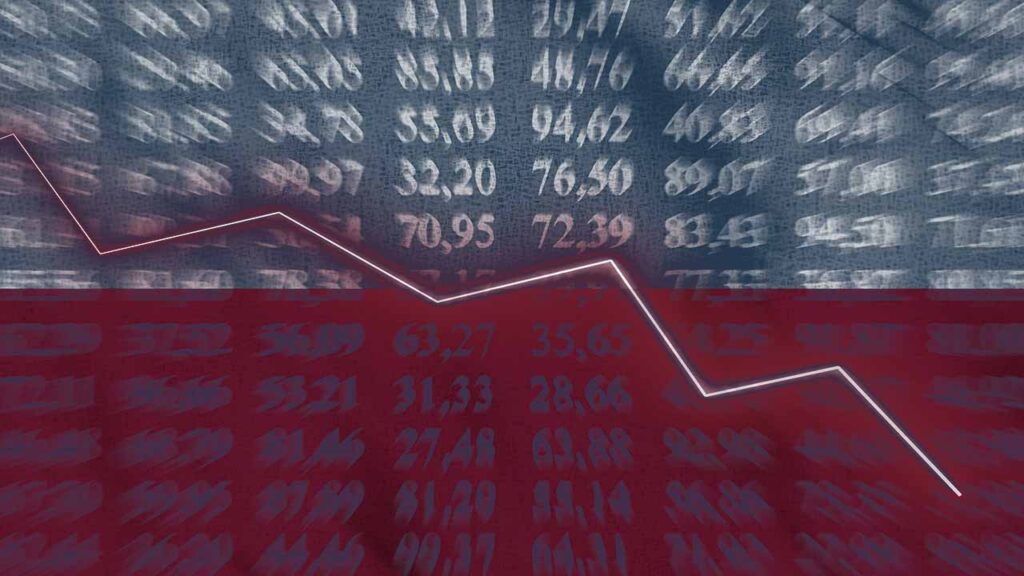Short selling is a trade or investment approach that lets you benefit when an asset price is falling. It is the exact opposite of buying a stock in that your hope will be for the shares to retreat.
Short selling makes it possible for market participants to profit in all seasons. For example, many short-sellers made robust profits during the dot com bubble as stocks retreated. They also made a fortune during the Global Financial Crisis (GFC) of 2008/9.
Short selling can be a highly profitable approach. However, as you will see below, it also exposes you to higher risks. This article will explain how short-selling works and some of the top strategies to use.
What is Stock Short Selling? The definition
There are two main ways of making money in the financial market. You can buy an asset when its price is trading low and wait for the price to move up. This is the most common method used by participants to make money.
It is also the same way in which participants use to make money in other assets. For example, in this method, you could buy a stock at $10 and sell it at $15.
Short selling is the opposite, because it involves selling high and buying low.
How does Short Selling work
Assume that a stock of company A is trading at $20 and you have $1,000 to invest. After doing some analysis, you can find that the stock is overvalued. You predict that the stock could decline to $10.
With short selling, you will go to the market, borrow 50 shares and then sell them. You will still have the $1,000. You can then buy the stock when it reaches $10.
In this case, with your $1000, you will have 100 shares. You return the borrowed 50 shares and you are left with a profit of $500.
There are two main participants in a short-selling transaction. There is the short seller, who is the trader and there is the market. In the past, this practice involved borrowing shares from specific market participants. These days, however, the process is automated. All you need to do to press the short button and the order will be executed.
Related » Why You Should Know Short Covering
At Real Trading, we give our traders an opportunity to make money when an asset’s price is rising or falling.
Short-selling participants
The short-selling process is made up of several participants. First, there are the short-sellers themselves. Second, there are brokers, who include companies like Schwab, Fidelity, TD Ameritrade, and Robinhood.
Third, there are market makers. A market maker is a company that provides liquidity in the financial market. All brokers in the US use these market makers to implement their trades.
Finally, there are large financial institutions like banks that act as custodians for these brokers.
Are there costs to short a stock?
Yes, there are costs to short a stock since it involves borrowing shares. The lender, who is often the broker, will demand a fee for doing that. In most periods, the cost of borrowing depends on the nature of a company.
The cost of shorting a stock depends on the nature of a company. Stable companies like Berkshire Hathaway and Microsoft tend to have a lower cost of borrowing.
On the other hand, high-risk companies like VinFast, Nikola, and Canoo that are in a deep sell-off tend to have a higher borrowing cost.
Practical Example
Let us summarize this example of short selling:
- You have $1,000 and stock A is trading at $20.
- You borrow 50 shares from the market. (Of course, there will be a small fee for this but let us ignore it.
- You sell the stock. Now, you have $1,000 on hand.
- After a few weeks, the stock falls to $10
- With the $1,000, you buy the same stock. You will have 100 shares.
- You return the 50 shares to the original owner.
One advantage of short selling is the ability to profit when the prices of stocks and other assets are decreasing. For example, if a recession does happen, there is a possibility that short sellers will have a field day. Another benefit is that it enables traders to be hedged.
When short-selling makes sense
Short selling makes sense in a number of conditions in the financial market. First, it is an ideal way of making money when a company is going through major challenges. For example, you can make decent returns after a company makes a big loss, dilutes investors by raising cash, or when its business is slowing.
Related » Short Selling in a Bear Market
A good example of this is what happened in 2023 when Credit Suisse collapsed. Before its collapse, the company had gone through major challenges that cost it billions of dollars. In this case, it made sense to place a short trade on the company.
Second, short-selling is also ideal when there are black swan events in the market. Some of the top black swan events in the market were the dot com bubble, the Global Financial Crisis, and the Covid-19 pandemic.
Third, it makes sense to short a company that is going through a secular decline. For example, a company like GoPro thrived a few years ago as its demand rose. It then went through a major dip as demand fizzled.
Finally, there are times when some sectors go through challenges, which makes sense for one to short them. For example, as shown below, companies in the clean energy industry like SunRun and Enphase Energy plunged in 2023 as the sector went through major headwinds.


How to short a stock
The process of shorting a stock has become relatively easy in the past decades. In the past, short-sellers had to borrow the stocks themselves and then buy back when they retreated. Today, shorting happens by just pressing a sell button on an asset.
Either way, you should follow a few steps when shorting a stock. First, ensure that your account allows you to short. You cannot short a stock when you have a cash account. Therefore, ensure that you have a margin account to implement short trades.
Second, do your research about a stock. In this stage, you should do both fundamental and technical analysis to determine whether to short a stock.
Fundamental analysis is where you look at a company’s business and predict whether the stock will rise or fall. You can look at things like revenue and profitability.
Technical analysis is where you focus on a stock’s chart. It lets you identify chart patterns and use indicators to predict the price action. Some of the most popular indicators that can help you predict this price action are moving averages, Relative Strength Index (RSI), and the VWAP.
Finally, you should place the trade and then protect it using a stop-loss or a take-profit. A stop-loss will close the trade when it reaches a certain loss level while a take-profit will stop it when it moves to a certain loss-making level.
The role of volatility in short-selling
Volatility is defined as a measure that represents the swings in the financial market. This volatility is caused by numerous factors like political, economic, industry and sector, and company performance.
Short-selling has an impact on an asset’s volatility. For example, during the meme stock mania period, we saw many stocks like GameStop and Bed Bath & Beyond surge because of a short squeeze.
A short squeeze is a period when many investors bet against a stock that is heavily shorted. In most periods, short-selling leads to higher volatility in the market.
Short trading strategies
There are many short-selling strategies that you can use. Some of the most popular strategies to think about are:
- Shorting sectors – This is a process where you place short trades in sectors going through major weaknesses. For example, We mentioned above how solar companies plunged in 2023.
- Trend-following – This is a situation where a short-seller identifies stocks that are falling and then places short trades.
- Reversals – This strategy involves identifying rising stocks that are about to turn around. You can use chart patterns like head & shoulders and double-top patterns. Also, you can use technical indicators like moving averages and the RSI.
- Contrarian – This is an approach where you place a short trade when stocks are rising. It is an extremely risky approach if the assets continue soaring.
Nikola Example
A good example of this is what happened in 2020 when a short seller published a critical report on Nikola. In it, the analyst said that investors were overpaying for a company that did not have a viable product. As a result, the stock crashed and the short seller benefited.
The chart below shows that the company’s shares dropped by more than 80% after the short report.


Short selling regulations
Short selling is a relatively controversial thing in the market. Many companies, especially those with a high short-interest, hate it for driving their shares downwards.
To a large extent, short-selling is legal in most countries like the United States and Canada. This means that traders and investors are at liberty to short any company they believe will drop.
Some countries ban short selling because they believe it leads to the devaluing of their companies. Some of the most notable countries that have banned short-selling are Turkey, South Korea, Thailand, Saudi Arabia, and Nigeria.
While short selling is legal, some activities that go into it are illegal. For example, some parts of naked short selling are illegal.
Naked short-selling is where the seller does not borrow or arrange to borrow the securities in time to make delivery within the period. In this case, the seller fails to deliver the securities to the buyer. At times, some acts of naked short-selling are illegal.
There are other short-selling regulations in the US. For example, there are circuit breaker regulations that demand a broker to pause shorting a stock that is in a deep dive.
Also, at times, a broker can restrict short-selling of a highly volatile. Their goal is to protect themselves from this volatility and also to protect their customers
What are the Short Selling Risks?
While short selling is a good method of making money, it is also the riskiest. That’s why It is riskier when you sell short than when you buy.
When you buy a stock at $10, the opportunities for making money are limitless. This is because a stock does not have a ceiling, it can move from $10 to $1,000.
In fact, this is something that has happened before. Think of Bitcoin that was trading at less than a dollar ten years ago and is now trading at $8,000.
Therefore, the worst that can happen when you buy a stock is to lose your entire money. With short selling, you can lose more money than you had invested. This is known as a short squeeze.
There are other short-selling risks in the market. For example, there is market manipulation, insider trading, margin calls, and naked short-selling. Market manipulation is a situation where some actors in the market put pressure on stocks to push their prices lower.
A margin call happens when a falling stock leads to major losses in the market, forcing the broker to request additional capital. Also, there are naked short selling risks, where you short shares that have not been determined to exist.
Why you Risk to Lose a lot of Money!
In the example above, what if the stock rose to $30? In this case, you will sell the 50 shares for $30, meaning that you will have $1,500. This means that you will have to pay $500 more from your pocket.
In the past, several famous participants have lost a lot of money by short selling.
A good example of this is Bill Ackman, who is famous for losing more than a billion by shorting a company known as Herbalife.
Another good example of this is Tesla.
The company has grown from a relatively small automaker to the largest in the world. Along the way, many short sellers like Jim Chanos have placed bets against the company.
However, in the past few years, the stock has been in a strong upward trend. Its market cap has increased from less than $50 billion two years ago to more than $800 billion.


Another good example is what happened in 2021 during the Wall Street Bets craze. At the time, companies like GameStop and AMC were among the most shorted. As the craze went on, the shares rose, leading many short sellers to lose billions of dollars.
How to avoid a short squeeze
There are several strategies of avoiding a short squeeze in trading. First, you should short assets in only a few periods and only when you are totally certain that an asset’s price will decline.
Second, you should only risk a small amount of money per trade. Ideally, you should not risk more than 3% of your account in a short trade.
Finally, you should always take advantage of a stop loss. This is a tool that will automatically stop your trade once the area of the maximum loss is reached.
Summary
Short selling is a significant and occasionally contentious technique within the realm of day trading. In fact, some regulators tend to ban short selling in periods of high volatility. This is a high-risk trading strategy that requires careful consideration and should be employed judiciously.
External Useful Resources
- How To Short Sell Stocks – Forbes
- Short Selling Stocks: 10 Things You Must Know to Succeed – Timothysykes
